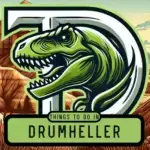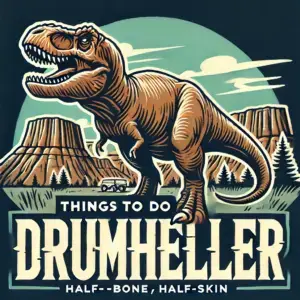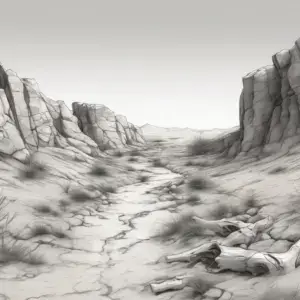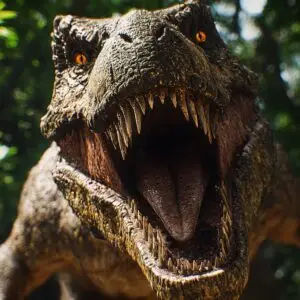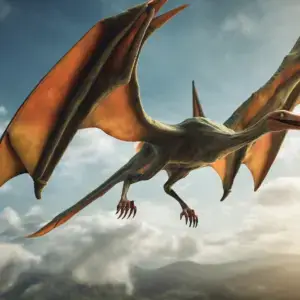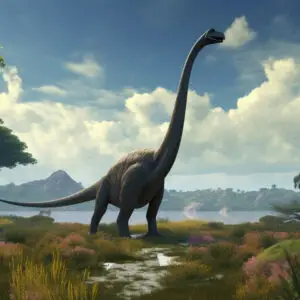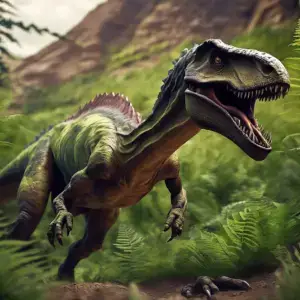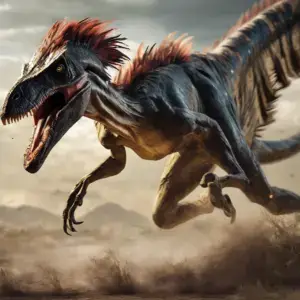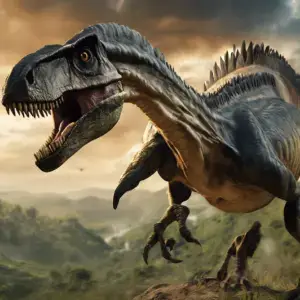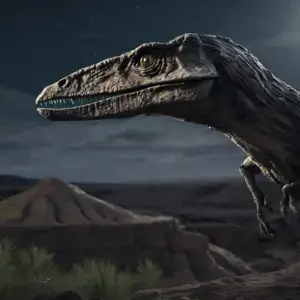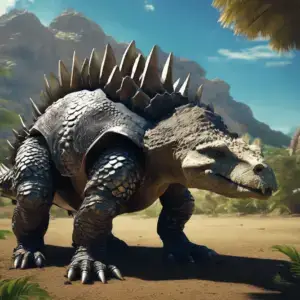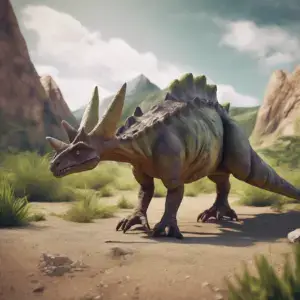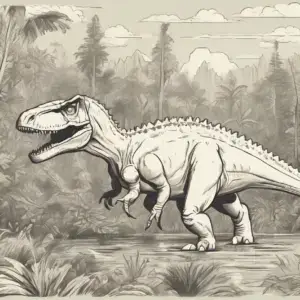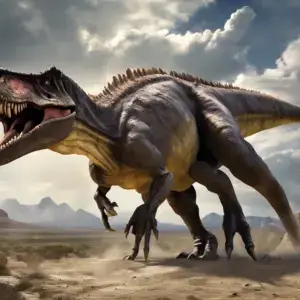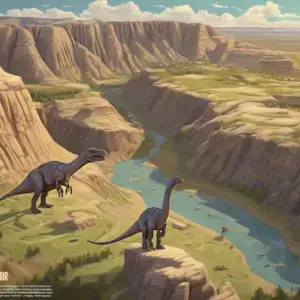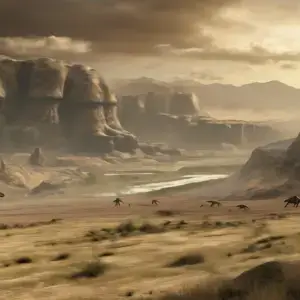




Brachiosaurus: The Long-Necked Titan of the Jurassic
AJ
Your Blog Name
Dive into Brachiosaurus’ towering neck, massive size, and tree-topping diet in this dino delight.
Imagine a dinosaur so tall it could peek over a four-story building, its neck stretching skyward like a living crane, munching treetops while others scrabbled below. That’s Brachiosaurus, the Jurassic giant that roamed North America 150 million years ago, a gentle titan built to graze the high life. With legs like redwoods and a snout sniffing the clouds, it was less a dinosaur and more a force of nature—a plant-eating skyscraper in a world of ferns and predators. Let’s climb into the Jurassic canopy and dig into the awe-inspiring story of Brachiosaurus, the long-necked wonder that redefined “big.”
A Towering Titan
Height That Awed
Brachiosaurus wasn’t just big—it was a record-setter, standing 50 feet tall at the shoulder and stretching 85 feet from nose to tail. Weighing 30 to 60 tons, it was a mountain of muscle and bone, its front legs longer than its back ones—a rare sauropod trick that tilted it upward like a giraffe on a grand scale. Fossils from Colorado’s Morrison Formation show a neck that soared 30 feet high, letting it nibble leaves no other dino could reach. Picture standing at its feet, craning your neck to see its head—it’d feel like staring up at a living tower, its shadow swallowing you whole in the Jurassic sun.
Built Like a Bridge
Its skeleton was a marvel—long, hollow neck bones kept it light, while massive leg bones acted like pillars, holding up tons of weight without buckling. That sloping posture, with a short tail balancing the front-heavy frame, made it a natural browser of the treetops. Fossils reveal vertebrae with air sacs, a trick borrowed from birds to cut weight without losing strength. It was a bridge between earth and sky, a design so solid it could wander forests without toppling, a testament to nature’s engineering in a world where size ruled.
Eating the High Life
Treetop Buffet
Brachiosaurus didn’t stoop to graze—it went straight for the canopy, stripping conifers, cycads, and ginkgos with a spoon-shaped snout full of chisel-like teeth. That 30-foot neck swept side to side, a crane plucking greens 40 feet off the ground—higher than any rival could dream. It didn’t chew much; those teeth ripped off mouthfuls, swallowing leaves whole to fuel its massive bulk. Picture it in a Jurassic grove, head lost in the branches, pulling down dinner while Stegosaurus nibbled bushes below—a dino with a VIP pass to the tallest buffet in town.
Stomach Stones and Gut Power
No molars? No problem. Brachiosaurus swallowed gastroliths—smooth stones that tumbled in its stomach, grinding tough plants into mush. Fossils from Utah show piles of these rocks, some baseball-sized, worn smooth by years of churning. Its gut was a factory, fermenting greenery with microbes to extract every nutrient, a slow process that kept this titan humming. It might’ve eaten 400 pounds of plants a day—imagine the sound of those leaves rustling down its throat, a constant munch that echoed through the forest.
A Life Among Giants
Jurassic Neighbors
Brachiosaurus roamed the Morrison Formation alongside Allosaurus, Stegosaurus, and Diplodocus—a bustling Jurassic neighborhood. Its height kept it safe; predators couldn’t easily reach that lofty neck. Fossils hint at herds—tracks in Wyoming show multiple Brachiosaurus wandering together, their steps shaking the earth. Babies stuck close, nibbling lower plants, while adults cleared the canopy, a family affair in a world of towering trees and lurking claws. It was a peaceful giant, but its size screamed “don’t mess with me” to any Allosaurus eyeing a snack.
Growing to the Sky
Hatchlings started small—maybe 2 feet long—tiny bundles dwarfed by their parents. They grew fast, piling on pounds daily to hit 50 feet by their teens, a decade of stretching skyward. Bone growth rings show a 20-to-30-year lifespan, each year adding girth and height. Fossils reveal juveniles with softer bones, hardening as they aged into titans. Predators might’ve nabbed the young, but adults were untouchable—living towers too big to topple, grazing their way through life.
Fossil Fame
Dug Up and Displayed
Brachiosaurus hit the scene in 1903 when Elmer Riggs named it from a Colorado find—a neck bone so huge it took a team to haul. The real jackpot came in 1900, with a near-complete skeleton from Fruita, now a star at Chicago’s Field Museum. More bones popped up in Utah and Wyoming, piecing together its towering tale. One specimen’s leg bone stood 6 feet tall alone—a fossil that makes you gasp. Casts in Berlin and Tokyo spread its fame, a dino that looms large in every sense, from dig site to display case.
A Hollywood Star
*Jurassic Park* gave Brachiosaurus its close-up—those iconic sneezes and serene strides stole hearts. The real deal didn’t sneeze on jeeps, but its grandeur was spot-on—fossils back up that towering, tranquil vibe. It’s a museum mainstay too; kids gawk at its neck, adults marvel at its mass. Each bone tells a story of a gentle giant that didn’t need to fight—just stand tall and eat, a Jurassic celebrity born from rock and time.
Legacy in the Leaves
Bird Ties and Big Vibes
Brachiosaurus isn’t a direct bird ancestor, but those air-filled bones link it to avian kin—lightweight tricks that echo in ostriches today. Its slow, steady life mirrors modern giants like elephants or giraffes, proving size and calm can rule. Fossils hint at more—soft tissue traces in some bones tease at skin or muscle secrets we’re still chasing. It was a plant-munching pioneer, shaping forests by clearing canopies, a titan whose footsteps still rumble through science.
A Jurassic Icon
Brachiosaurus didn’t roar or claw—it towered, a quiet king of the treetops. Its fossils keep us guessing—how did it pump blood that high? How much did it eat? Each find adds a layer, from Wyoming digs to lab studies, making it a dino that grows bigger in our minds. It’s the Jurassic’s gentle giant, a long-necked legend that proves you don’t need teeth to leave a mark—just reach higher than anyone else.
Brachiosaurus was a skyscraper with scales, a tree-topping titan that grazed its way into history. From Jurassic forests to our imaginations, it’s a dino that stands tall—literally and legendarily.

